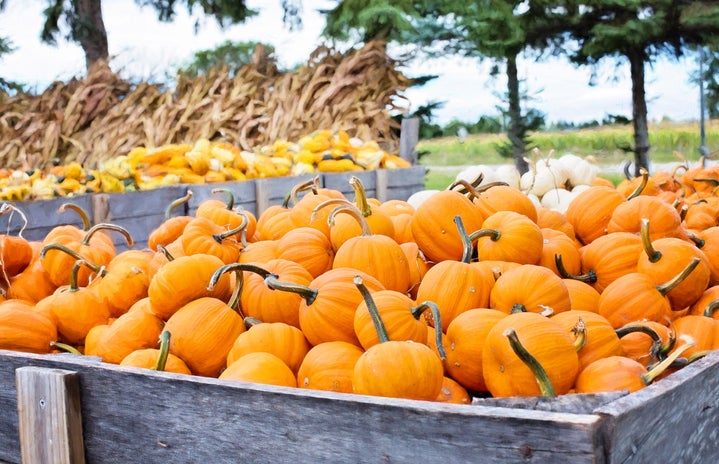Here’s to Halloween, a night of tricks, treats and scandalous costumes. Like many mainstream holidays, Halloween has a lengthy history, but only select details are passed down through the generations. Luckily, for fans of the spook-tacular, its history survives and lives on within the Neopagan and Wiccan Sabbat, Samhain (read: sow-in).
Originally what we now know and love as a highly commercialized holiday was considered the end of the year for the Celtic people that lived nearly 2,000 years ago. The 31st to the 1st marked the end of summer and the journey into the bitter depths of winter. It was closely tied to death as the boundary between the living and the dead was thought to be at its thinnest. With this boundary weakened, ghosts of those long-passed walked the land, leaving damaged and dying crops in their wake. The only comfort they had were that Druids, the Celtic equivalent to Priests, were able to make predictions and spout prophecies with ease during this time, providing hope.
But this was still a holiday, and holidays are to be celebrated.
Large bonfires were built and the Celts would don costumes made from animal pelts and skulls as they attempted to tell one another’s fortunes. Crops and animals became sacrifices, burnt in the bonfire as offerings to their deities. If you look at how this has translated to the present, the only animals that are usually sacrificed are black cats who are thought to be linked to the devil, and the ones doing the sacrifice are typically part of extremist cults.
As the evening drew to a close, they’d return home and light their hearths with flames from the great bonfire to serve as protection for the upcoming winter.
Then the Roman Empire conquered the Celtic land and the celebration of Samhain got lumped together with two Roman festivals: Feralia and Pomona. Pomona is where the tradition of bobbing for apples comes from.
Christianity soon followed, and doing what it has historically done, attempted to replace the celebrations with their own.
All Souls Day was a church-sanctioned holiday on November 2nd. It was celebrated similarly to Samhain, with bonfires and parades. They also added in angel, devil and saint costumes, so next time someone’s on you about your devil costume, tell them about its historical roots.
Somewhere during this time, All Souls Day adopted the name All-hallows, and Samhain became All-hallows Eve.
These celebrations would come to North America with the colonizers and become the basis for what we know today as Halloween.
That just leaves the question of where trick or treating came from. After all, this quintessential Halloween tradition can’t just be a creation of capitalism’s imagination!
Well, that’s half true.
Trick or treating is partially a result of old and time-honoured practices and partially the result of a general push to remove the morbid superstitious and religious overtones during the 1800s.
Back in what is now Ireland and England, trick or treating was a time where the homeless and hungry could go door to door and offer blessings or protections from malevolent spirits in exchange for soul cakes. Soul cakes were small cakes made to honour the dead. The practice was referred to as “going a-souling” and would later be adopted by children.
In America, people would go door to door asking for food and money while in costume. (Honestly, it’s a shame Halloween now doesn’t include asking for money). This was based on the previous tradition.
Now this is all well and good, but if you’re a broke university student, celebrating Halloween comes with a budget. While you can’t go asking for money, or at least you shouldn’t, you can give soul cakes a go. There are various recipes that exist online if you feel like giving it a try. Just last year I made a shortbread version that I’d found during my research. I proceeded to leave my container of them at a friend’s house after a Halloween get together, but the pastries were delicious.
So, as the sun sets on another day and leads us closer to Halloween, I implore you to look a little further into history and see if there are any traditions you’d like to incorporate into your festivities.
Happy Hauntings and a Blessed Samhain Golden Hawks!



